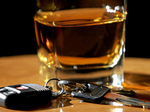 About ten 2010 car models come equipped with “lane departure correction” – a feature that automatically corrects the steering of drivers who veer outside their lane.
About ten 2010 car models come equipped with “lane departure correction” – a feature that automatically corrects the steering of drivers who veer outside their lane.
It seems like the next safety breakthrough, the next invention that, like the seat belt or the airbag, will prevent a million car accident deaths. But will it? Economist Alex Tabarrok is not convinced. He sees the “Peltzman effect” at work in NHTSA testing of the feature.
The “Peltzman effect” is a social science term used to describe the new risks that drivers take once they obtain new safety features – risks that offset, in whole or in part, the increase in safety provided by the new safety feature. Readers of this blog have previously seen the Peltzman effect at work in our posts about football helmets. Football helmets offer protection against head injuries, which encourages players to play more aggressively, ultimately leading to more head injuries.
One case study in the Peltzman effect is the twenty year old woman in the NHTSA study of lane departure technology who told NHTSA investigators that she would love to have the lane departure feature in her own car because then she could drive home after a night of drinking, instead of having to stay at a friend’s house. The new safety gains offered by the lane departure feature will be, at least partially, offset by the new risks this young woman will take in attempting to drive home while intoxicated.
Fortunately, the pessimistic tale of the Peltzman effect does not appear to be the whole story. The more careful statistical analysis carried out in the article that Tabarrok links to suggests that the safety gains from lane correction will not be canceled out by new risks and that, in fact, auto lane correction will prove a net safety benefit for drivers.
As a side note, I hope to have the opportunity in the next few weeks to blog about a book that Tabarrok co-authored a few years ago: Judge and Jury: American Tort Law On Trial. The book bears on a lot of what I’ve blogged about one thing. Its section on juries and how jury composition determines the size of awards provides some great insights that can help to explain why Massachusetts jury verdicts vary so widely by county. Also, contra the suggestion of some tort reform blogs (that have accused me of misrepresenting economists’ support for our tort system), Tabarrok is another mainstream market economist who gives our tort system a largely clean bill of health.
If you have been injured in an accident and require the services of a Boston car accident lawyer, call The Law Office of Alan H. Crede today at (617)973-6434.
